Rome
The Eternal City needs no introductions. As the old say goes - all roads lead to Rome and if that might no longer be the case figuratively, it’s still very much the case from a symbolic point of view: long from being dead, classical Rome is at the roots of Western and Christian culture and so much timeless art and culture blossomed in this city during and after the ancient Empire that we can safely say that we all still breathe Romanity.

Photo Credit: Paul Lee-Maynard
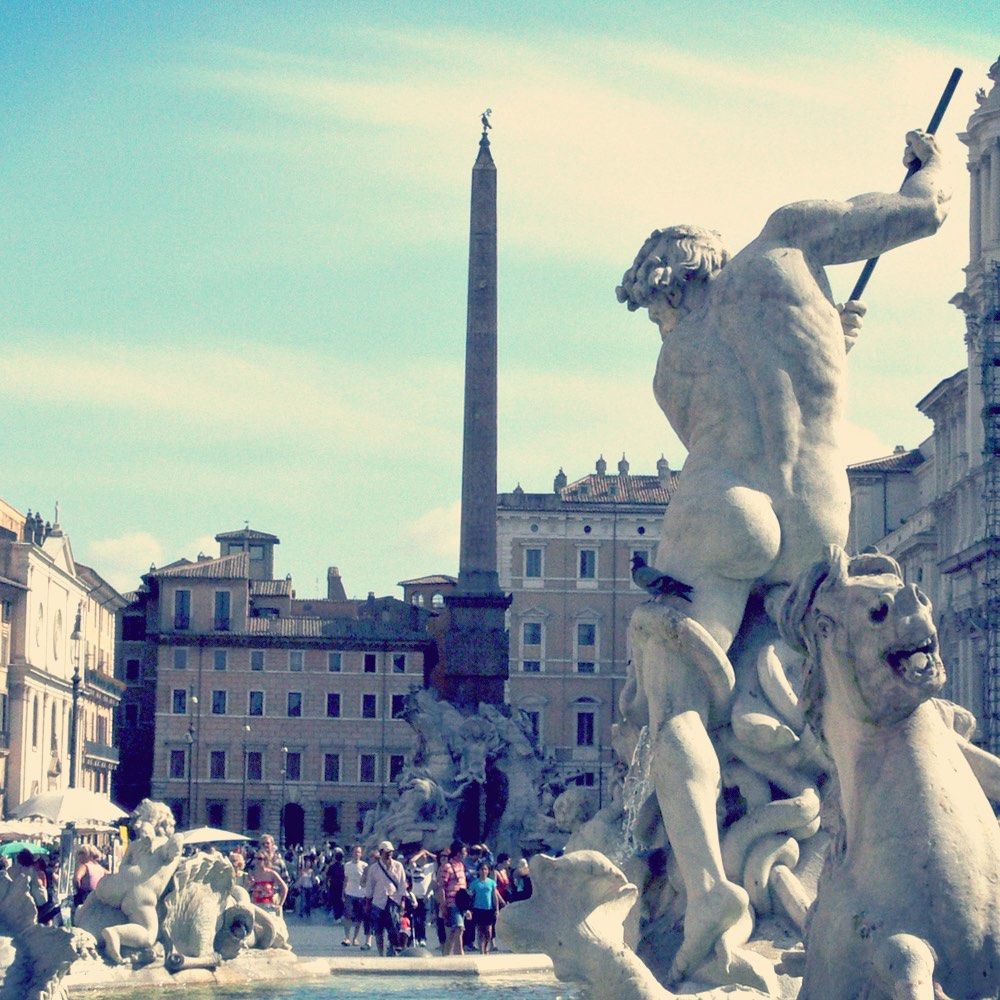
When to visit
Rome has a typical mediterranean climate, with very hot and long summers and relatively mild winters. The wettest period is between late October to December and then again in early spring, though the rain seldom lasts more than a couple of days each time. Summers can be extremely hot, with July and August often seeing temperatures above 30-35 degrees. In August the city is a bit quieter as many residents leave the scalding city for a few days’ holidays.
Discover and enjoy...
If you have never been here before, make sure you don´t miss the main sightsAnd whether it´s your first time or you´re coming back again, we think you´ll enjoy these hot tipsor take that special vacation selfie
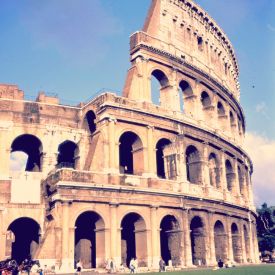
Where to start here? Dive into the classical splendour of the Forum, the Pantheon and the imposing Colosseum. Then dive into the architectural masterpieces that is St Peter's, before losing yourself in the mindblowing Vatican Museums and the Sistine Chapel. Wander through the narrow streets of the centre and find jewels like Piazza Navona, the Trevi Fountain and the Spanish Steps. Hike up the stairs of the original and very first Capitol Hill and visit the riches of the Capitoline Museums.

Emperor Nero is said to be fiddling while Rome was burning and that might or might not be true. What is definitely certain is that Nero's imperial residence bears the signs of his extravagant tastes. His Domus Aurea (house of gold, literally) stood near the Colossuem, which in fact was built later on a private lake that Nero had in his extensive gardens. Successive emperors tried to erase any memory of Nero, but the ruins of his palace are still visible underground and show a residence which had among its features, pools with hot thermal waters, a revolving dining room, gold and precious stones mosaics and gigantic statues depcting the emperor himself.
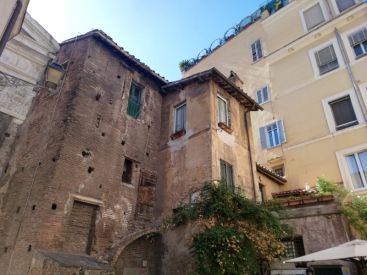
The Jewish community of Rome is the oldest in the world outside of the Middle East, with a continuous existence from classical times down to the present day. In 1555, Pope Paul IV established that all the Roman Jews could only live in the Ghetto, a walled quarter with gates locked at night. The Ghetto, along the river and behind the Teatro Marcello, was unsalubrious and there were all sorts of restrictions for its residents. Today, the area is still the spiritual heart of the Jewish community in Rome, with its imposing sinagogue and the many restaurants and taverns where you can taste some of the autenthic specialities of the city, like Carciofi alla giudía (Jewish-style artichokes).

In Roman times, the eternal city had more than a million inhabitants and so to feed such a large population there had to be a huge port servicing the city. That was the reason why Ostia became such an important city. Situated along the cost, about 20 Km west of Rome, it was where the shipping companies' offices and warehouse were, plus the residence for the merchants and all of those who worked in the docks. It reached a population of 100,000 in imperial times. With the decline of the empire, the city was abandoned and covered by vegetation. Excavated in the 20th century, today we can admire the splendour of this ancient city, sit in the Theatre (which is still used for summer shows) and wonder at the mosaics of the once lavish shops, houses and public squares.

Pizza may have been invented in Naples - and in fact the Neapolitan Pizza is a UNESCO intangible cultural asset, but in Rome - just 220 Km north, it's all another story. Here in the Eternal City your typical round pizza will be served to you with the thinnest of bases and a crisp edge. The Pizza Romana's secret is the higher content of olive oil, which makes the crust crunchy.
Romans also like to eat their pizza 'on the go' and that's why in many bakeries, you can buy 'pizza al taglio' - slices of focaccia-like pizzas baked in large trays. They come with the most amazing topping or just plain, with olive oil and salt sprinked on top. This type of pizza is much thicker and that is due to the double rise of the dough, the second directly in the baking tray.
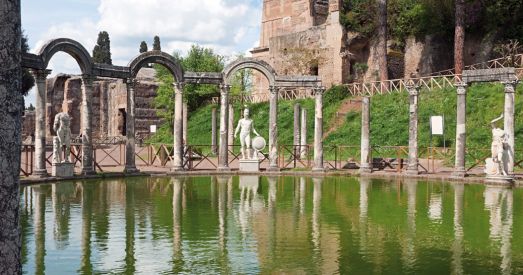
The Villa Adriana was the magnificent country residence of the Roman Emperor Hadrian at Tivoli, near Rome. Its imposing ruins are simply stunning and a testimony of the power and ingenuity of Imperial Rome.
However, they also offer a glimpse on the private life of Hadrian, who was deeply in love with a young guy from modern-day northern Turkey - named Antinous. When Antinous drowned in the Nile under mysterious circumstances, Hadrian elevated him to a god and built a whole area in his lover's honour in his summer villa. This particular area was only discovered 25 years ago and it is said to be centered around the tumb of Antinous himself. Here was also the obelisk dedicated to him, that was later moved to the Pincio Hill (see here)
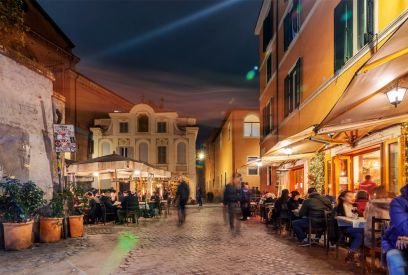
Especially in the summer months, Rome gets lively at night, with locals and tourists enjoying bars and restaurants. Trastevere has been a favourite for many years, with its countless local taverns and quirky bars along the narrow and picturesque vicoli. During the hot summer nights, their terraces provide a welcome respite from the heat. However, another area that it totally up and coming and less touristy is the Testaccio district, where you will also find a lot of clubs and this is where the locals go for a drink and a dance. Finally, if you want more LGBTQI+ friendly places, head for the Via San Giovanni in Laterano - right next to the Colosseum, where you will find historical gay bars like the 'Coming Out'.

During the summer months Rome is often unbearably hot. Thankfully, the sea is not so far away and the one beach that is truly LGBTQI+ friendly is the Naturist Oasis of Capocotta. This stretch of sand, backed by some often busy bushes, has a long queer history since the 1970s, but only in 2000 it was offcially declared a naturist oasis. It's a precious section of the coast that has been spared from the savage urbanization of the 60s and 70s, but as a result it's a relatively remote location and getting here isn't easy unless you have a car or bike. If you don't, you will need to take the Metromare train from Porta San Paolo to Cristoforo Colombo station and then board the 07 bus, which only comes once an hour, so it's best checking the schedules.
Planes, trains and automobiles...
Rome is served by two airports - the main is Leonardo Da Vinci, better known as Fiumicino, from the name of the small town close by. Situated about 30 Km from the centre of town and close to the sea, it is served by all main airlines and has three adjacent terminals, T1 is for domestic, T2 is for the low cost carriers and T3 is for all the other flights. To get to and from the airport the best option is to take the airport train that stops just opposite the terminals: there are two lines - one is the Leonardo Express that connects with Termini main railway station in 30 minutes every half an hour.
There is another line (FM1) that is a suburban one and it loops around the centre to secondary rail stations around the city centre.
An even cheaper option is to take the Terravision or CoTral bus to/from Termini, but the traffic may be diabolical especially at peak time, so bear that in mind when you have a flight to catch.
The other airport, Ciampino, is mainly served by some low cost carrier, i.e. Ryanair and WizzAir and it is not so easy to get to/from. There are buses to Termini rail station or to the local Ciampino rail station.
Taxis are not the best option from either airport - they can be expensive and often they get stuck in the infamous Roman traffic. Also beware of taxi touts: do not accept rides from people at the arrival hall or around the airport. If you decide to take a taxi go to the proper taxi rank and wait there.
As already mentioned, Rome’s traffic can be pretty challenging, however in the city centre the traffic has been progressively put under control and many areas have been pedestrianised. The fastest way to get about is to use the Metropolitana (or Metro, as it’s called). There are two lines with an interchange at Termini, plus a third under construction and partially opened. Buses and trams are also a good (and more interesting) option to travel, at least within the central area. All are managed by ATAC.
Travelling on public transport is pretty cheap: a single ticket is called BIT is only €1.50 (Dec 15) and it needs to be stamped by the machine upon getting on the bus and is valid for 100 minutes, even if changing on different lines as long as the journey is completed within the set time. On the Metro it is valid for one journey. There are 24/48/72 hours tickets that offer unlimited journeys over a set period and also a weekly ticket (CIS). All of these are valid for the applicable time from the first stamping and are available, just like the BIT tickets, from machines at main Metro stations, plus many shops, newsagents kiosks and cafes (look for the ATAC sign).
The Scene
Apart from the self-designed 'gay street' Via San Giovanni in Laterano, next to the Colosseum, where a couple of bars are very popular with the tourists, there isn't an area in Rome where most of the LGBTI+ life is located. In fact many bars and clubs are spread out and located well outside the city centre, so you will be required to plan your movements.
For a city of 3m Rome perhaps does not have the buzzing gay nightlife that one finds in other similarly sized metropolis. Yet things have changed dramatically in the last few years with more bars and visibility. Unfortunately in the last few years there has also been a parallel increase in homophobic violence, so it pays to be vigilant, especially at night.
It's worth noticing that most fetish / cruising bars in Rome are actually 'clubs', so you will be required to have or sign up for membership on the door - remember to bring appropriate ID/passport for this purpose.



















